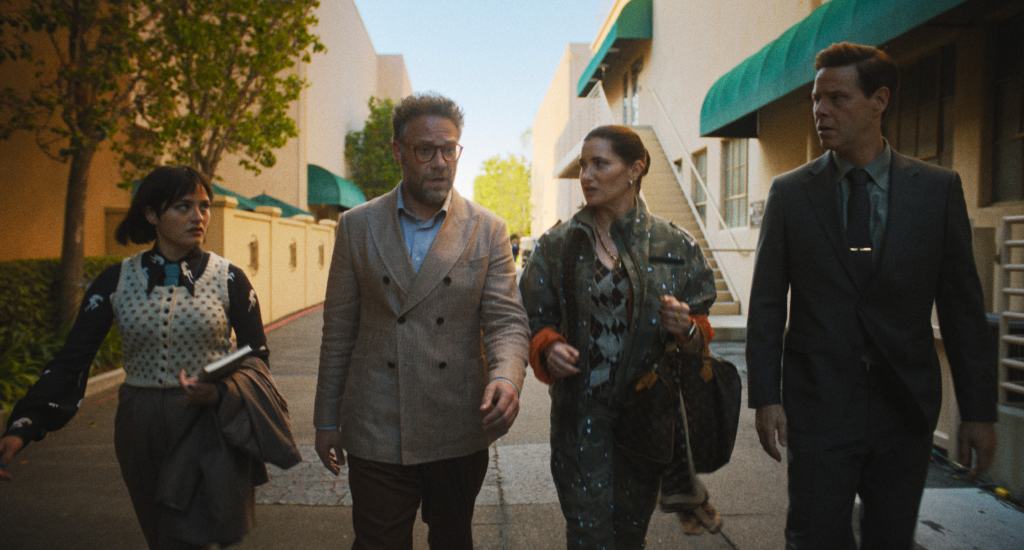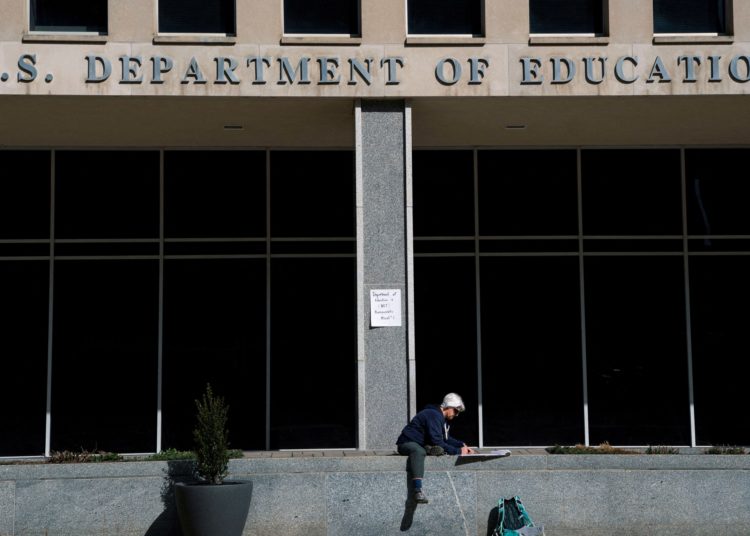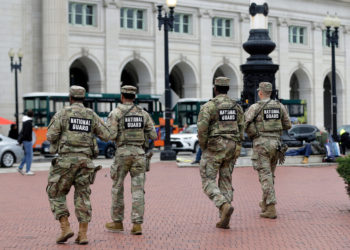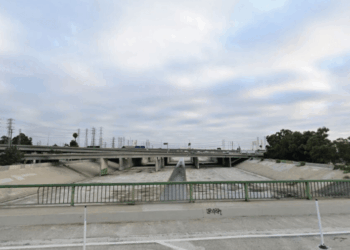If you ask people what stands out about The Studio, you’re going to get a lot of different answers. The thing that truly makes the series shine however, is the ‘oner’ approach to filming. A oner is a continuous, uninterrupted shot with a long duration, which is not a new method of filming, but it is certainly a new way to approach comedy. Seth Rogen and Evan Goldberg are no strangers to trying something new, and that approach led to a truly unique comedy series.
Beyond the work of cinematographer Adam Newport-Berra, filming a comedy series in oners is only possible with the collaboration of every major craft department. Editor Eric Kissack’s “live editing”, composer Antonio Sanchez’s percussive style, production designer Julie Berghoff’s Continental Studios design and costume designer Kameron Lennox’s old Hollywood color palette were each essential to bringing the project to life.
One of the main reasons the ‘oner’ approach to filming The Studio stands out is because it is usually only used to film dramas. “All the film references and touchstones we had for the show were primarily dramatic, and I think it’s because comedy is really not familiar with the oner,” says cinematographer Adam Newport-Berra. “That’s what was exciting about this show, we got to introduce a new aesthetic to that genre and it was tough.”
Although the approach was difficult, Newport-Berra says the series would have been completely different, and not as successful, if it was shot with regular methods. “If the show is shot with three cameras with coverage, I think that the performances would’ve been less inspired,” he says. “The energy wouldn’t have been as electric. What you get out of a oner is this collective energy on set that’s just like nothing else you can experience. Every time we call action, everyone on set is just completely swept up in the shot itself.”
Though the cinematographer is the first that comes to mind when considering how a series is shot, Newport-Berra says it needs to start with the script. “One of my first meetings with Seth and Evan, I mentioned the fact that you can’t just make any script a oner,” he says. “You really have to write in a specific way that lends itself to shooting a oner and that you’re always making considerations when you’re moving from one space to another. So, the writing was really important.”
One of the ways to make a oner work is to write long scenes with a lot of dialogue. This served as the inspiration for composer Antonio Sanchez’s score, which had to focus on percussion to punctuate dialogue rather than scoring visuals. “Drums, percussion and some other atmospherics in there like bass, lend themselves to punctuating the dialogue,” he says. “It is hard to do that with other instruments. I check out the scene, study it, mark it, know what dialogue is important… and then just improvise while watching it.”
Not only did Sanchez use percussion to punctuate words, he also says deliberate moments of silence played a big role. “In this case, somebody says a word and I really punctuated – sometimes with a symbol, sometimes with silence,” he says. “That’s very effective too, when you use space to mark a word, movement or phrase because it really makes it stand out when there’s music on either side of that word.”
There is a reason why comedy is usually not associated with oners – loss of spontaneity and improvisation. It’s very hard to regulate the pace and the timing to keep the comedy alive in oners,” says editor Eric Kissack. “We had these amazing improv performers like Ike Barinholtz and Kathryn Hahn, and they’re going to do something wild each take and almost never are you going to get one take where everyone does their funniest, weirdest stuff.”
“The reason why comedy is often cut up so much is because actors give different performances and you want to leave space for improv and for comedic timing,” says Newport-Berra. “Often we rely on the edit and coverage to make the comedy work, so our challenge with the show is that we were constantly editing as we were shooting, which is both terrifying and also really incredible because you get to know immediately if the show is working or not.”
When Newport-Berra says “constantly editing as we were shooting”, you would probably think he means with a laptop on set. In reality, The Studio did something else to stand out by having the editor on set “live editing” as they were filming. “We called it ‘live editing’… my job was to make sure that those oners were never boring,” says Kissack. “By take five or six, I would start marking up the script with a pen and we started making these trims as we were shooting the takes.”
Having an editor on set was definitely a new experience for Newport-Berra, who says it was “disorienting at first” before he started to see the necessity. “Eric became a completely integral part of how we made the show because we were live editing,” he says. “He was really helpful in figuring out places to trim down things or scenes where shots could be stitched together so that we could break off smaller chunks of the scene.”
The disorientation most likely came from Kissack needing the camera to focus on specific people at certain points, to create cut points that he could use to edit in improv lines. “I would identify the moments where Kathryn Hahn’s going to do something wild, or Catherine O’Hara was going to do something silly, and I would ask Adam to move the camera from one person to another,” he says. “They always hated that because in their mind, the most beautiful, perfect version was one where the camera’s organically moving around and capturing, but it wouldn’t have given me any cut points.”
Cinematography is obviously essential for the oner, but you can’t shoot continuous, uninterrupted shots with poorly designed sets. “From a production design standpoint, locations are crucial locations that give us enough space to do something interesting and allow the actors to move,” says Newport-Berra. “Julie Berghoff, the production designer, was really helpful in designing sets that we could see in 360 degrees. We always tried to pick locations where no matter where we looked, we were excited to be shooting that because we really wanted to be prepared for everything.”
The most crucial set to get right was the offices of Continental Studios, which served as the background for many scenes. Production designer Julie Berghoff started with researching the designs of other major studios that would have been built around the same time, like Paramount and Universal, and then tried to get in the headspace of what the fictional founder of Continental Studios would do differently to stand out.
“I tried to be different from art deco architecture and it was in the golden age, in the ’20s that would’ve been the norm, but that was Sony already,” says Berghoff. Instead, she started looking into Frank Lloyd Wright and mid-century architecture. “There’s pieces of Frank that inspired that whole office. The ceiling was more of his prairie style, his origin story, and then the columns came from his Japanese imperial palace and how he used a lot of brick in a negative form to create shadows on his spaces.”
With Wright as an inspiration, Berghoff used the Mayan architectural influences he brought to the World’s Fair. The end result was a two-story building with constant views of the floor below, though she says the color palette was a bit different from the Mayan influences. “I imagined it to be more white and gray, but then it wouldn’t have gone as well with the color palette of the wardrobe,” she says. “When I saw the rusts and the coppers, I changed anything gold into copper and I brought in the rust tones.”
Berghoff worked closely with costume designer Kameron Lennox to make sure their color palettes aligned and didn’t clash. “We did a lot of swatch matching,” says Lennox. “I’d bring swatches in and it would be almost the same swatch that she had for a chair or a couch, so she would change it because she was very flexible in that way. But she made this beautiful mural in the set for continental studios that had a lot of tones in it too, that I was taking note of and adding into mine. It was very much a mutual appreciation of this palette.”
For the palette itself, Lennox took inspiration from old Hollywood while keeping to Rogen and Goldberg’s desire for neutral and earthy tones. “We just added our little tidbits here, a small amount of a turquoise to pop so it’s not so flat, or the kind of paprika colored orange,” she says. “It’s a little brighter just to bring out some of the browns and some of the greens that we use. The palette in my mind is just these very romantic, beautiful, 1940s tones, with some of the rich things that you can find in textiles.”
The post The Craft Of ‘The Studio’: How The Cinematography, Editing, Production Design, Score & Costume Design Bring A “New Aesthetic” To Comedy appeared first on Deadline.




